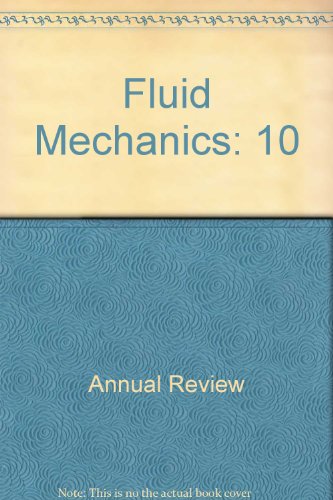Continuum and Molecular Dynamics Studies of the Hydrodynamics of Colloids Straddling a Fluid Interface
IF 30.2
1区 工程技术
Q1 MECHANICS
引用次数: 5
Abstract
Colloid-sized particles (10 nm–10 μm in characteristic size) adsorb onto fluid interfaces, where they minimize their interfacial energy by straddling the surface, immersing themselves partly in each phase bounding the interface. The energy minimum achieved by relocation to the surface can be orders of magnitude greater than the thermal energy, effectively trapping the particles into monolayers, allowing them freedom only to translate and rotate along the surface. Particles adsorbed at interfaces are models for the understanding of the dynamics and assembly of particles in two dimensions and have broad technological applications, importantly in foam and emulsion science and in the bottom-up fabrication of new materials based on their monolayer assemblies. In this review, the hydrodynamics of the colloid motion along the surface is examined from both continuum and molecular dynamics frameworks. The interfacial energies of adsorbed particles is discussed first, followed by the hydrodynamics, starting with isolated particles followed by pairwise and multiple particle interactions. The effect of particle shape is emphasized, and the role played by the immersion depth and the surface rheology is discussed; experiments illustrating the applicability of the hydrodynamic studies are also examined. Expected final online publication date for the Annual Review of Fluid Mechanics, Volume 54 is January 2022. Please see http://www.annualreviews.org/page/journal/pubdates for revised estimates.跨越流体界面的胶体流体动力学的连续体和分子动力学研究
胶体大小的颗粒(特征尺寸为10 nm–10μm)吸附在流体界面上,在那里,它们通过横跨表面,将自己部分浸入界面的每一相中,从而最大限度地减少界面能。通过重新定位到表面实现的能量最小值可以比热能大几个数量级,有效地将颗粒捕获到单层中,使它们只能自由地沿着表面平移和旋转。吸附在界面上的颗粒是理解二维颗粒动力学和组装的模型,具有广泛的技术应用,重要的是在泡沫和乳液科学以及基于单层组装的自下而上的新材料制造中。在这篇综述中,胶体沿表面运动的流体动力学从连续体和分子动力学两个框架进行了研究。首先讨论了吸附粒子的界面能,然后讨论了流体动力学,从孤立粒子开始,然后是成对和多粒子的相互作用。强调了颗粒形状的影响,讨论了浸泡深度和表面流变性所起的作用;实验也验证了流体动力学研究的适用性。《流体力学年度评论》第54卷预计最终在线出版日期为2022年1月。请参阅http://www.annualreviews.org/page/journal/pubdates用于修订估算。
本文章由计算机程序翻译,如有差异,请以英文原文为准。
求助全文
约1分钟内获得全文
求助全文
来源期刊
CiteScore
54.00
自引率
0.40%
发文量
43
期刊介绍:
The Annual Review of Fluid Mechanics is a longstanding publication dating back to 1969 that explores noteworthy advancements in the field of fluid mechanics. Its comprehensive coverage includes various topics such as the historical and foundational aspects of fluid mechanics, non-newtonian fluids and rheology, both incompressible and compressible fluids, plasma flow, flow stability, multi-phase flows, heat and species transport, fluid flow control, combustion, turbulence, shock waves, and explosions.
Recently, an important development has occurred for this journal. It has transitioned from a gated access model to an open access platform through Annual Reviews' innovative Subscribe to Open program. Consequently, all articles published in the current volume are now freely accessible to the public under a Creative Commons Attribution (CC BY) license.
This new approach not only ensures broader dissemination of research in fluid mechanics but also fosters a more inclusive and collaborative scientific community.

 求助内容:
求助内容: 应助结果提醒方式:
应助结果提醒方式:


